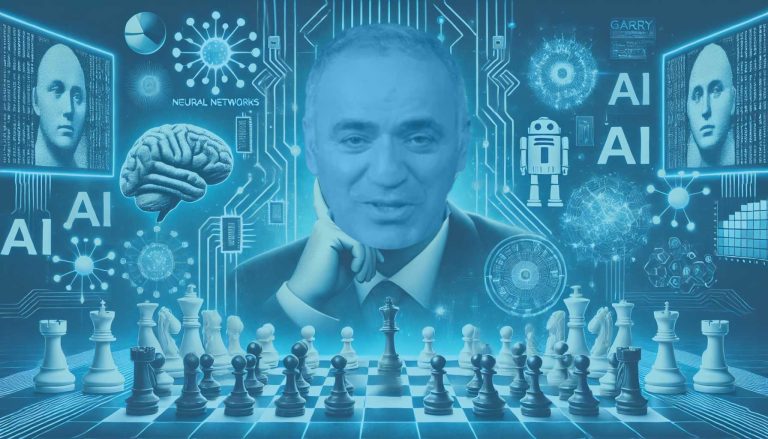In 1997, the world watched as Garry Kasparov, the reigning world chess champion, was defeated by IBM’s supercomputer Deep Blue.
Rather than accepting that humans were no longer relevant as chess players, Kasparov saw this event as a new beginning. He pioneered the concept of Freestyle Chess, where humans and AI collaborate, combining their strengths.
As Kasparov later said, ‘Weak human + machine + better process is superior to a strong human or a strong machine alone.’
This fascinating experiment revealed a powerful insight: the synergy between humans and AI can surpass the capabilities of AI or human expertise individually.
For businesses navigating the complexities of the modern world, this lesson is both timely and transformative.
The Power of Human and AI Collaboration
In Freestyle Chess, teams composed of human players equipped with AI assistants competed against grandmasters or advanced stand-alone AI systems in high-level competitions. The results were striking: teams that effectively integrated human intuition with AI’s computational power consistently outperformed both human experts and standalone AI’s.
Why did this happen?
- Complementary Strengths: Humans bring creativity, strategic thinking, and ethical considerations. AI contributes speed, data processing, and pattern recognition.
- Enhanced Decision-Making: Together, the human/machine team can evaluate more options and foresee potential outcomes more accurately.
- Adaptive Learning: The collaboration allows for continuous learning and adaptation, improving performance over time.
Applying Kasparov’s Insights to Business
Just as in chess, businesses face complex challenges that require both human judgment and data-driven analysis. By fostering collaboration between employees and AI systems, organizations can:
- Improve Efficiency: Automate routine tasks, allowing employees to focus on strategic initiatives.
- Enhance Innovation: Use AI to generate insights from vast data sets, sparking new ideas and opportunities.
- Strengthen Decision-Making: Combine human experience with AI’s analytical capabilities to make more informed choices.
Examples Across Industries:
- Finance: Analysts work with AI to detect market trends and risks, optimizing investment strategies.
- Healthcare: Doctors use AI-assisted diagnostics to identify conditions earlier and tailor treatments to individual patients.
- Manufacturing: Engineers collaborate with AI for predictive maintenance, reducing downtime and increasing productivity.
The Importance of an Effective Human-AI Interface
For this collaboration to be successful, the interface between humans and AI must be seamless and intuitive.
As Kasparov has said, ‘The point is not just to work together but to create an effective symbiosis where both human and machine elevate each other’s performance.’
Kasparov’s experience highlighted that it’s not just about combining forces but doing so effectively.
Key Considerations:
- User-Friendly Systems: AI tools should be accessible and easy to use, without requiring specialized technical knowledge.
- Clear Communication: There must be a transparent flow of information between the AI and the user, with understandable outputs and actionable insights.
- Trust and Reliability: Employees need to trust the AI systems, which requires consistent performance and clear explanations of how conclusions are reached.
The Necessity of Full Information Exchange
An essential element of successful collaboration is the extensive exchange of information. Holding back data or insights from the AI can hinder its ability to provide valuable contributions.
As Kasparov noted, ‘By working together, humans and intelligent machines can reach new heights that neither can reach alone.’ A less skilled player who trusted the AI and did not withhold information often performed better than a stronger player who overrode the AI or allowed personal biases to interfere.
The importance of full trust and openness in effective human-AI collaboration cannot be overstated.
Why Full Exchange Matters:
- Comprehensive Analysis: AI algorithms perform best when they have access to all relevant data, enabling deeper and more accurate analyses.
- Contextual Understanding: Providing complete information allows the AI to understand the nuances of specific situations, leading to better recommendations.
- Avoiding Biases: Withholding information can introduce biases or blind spots in AI outputs, potentially leading to suboptimal or even harmful decisions.
The Challenge with Public AI Services
While public AI platforms offer convenience and powerful tools, they come with significant risks, especially regarding data privacy and intellectual property.
Risks Include:
- Loss of Competitive Advantage: Proprietary information could inadvertently become accessible to competitors if it’s part of a shared AI ecosystem.
- Data Exposure: Information shared with public AI services may be stored, analyzed, and used to train their models, potentially exposing sensitive data.
- Regulatory Compliance: Sharing confidential data externally may violate laws such as GDPR, CCPA, or industry-specific regulations.
Why Self-Hosted AI Solutions Are the Answer
To fully realize the benefits of human-AI collaboration without compromising security, businesses should consider self-hosted AI solutions.
Benefits of Self-Hosting:
- Data Control: Keep all sensitive information within your organization’s secure environment.
- Customization: Tailor AI systems to your specific needs, industry, and operational processes.
- Compliance Assurance: Ensure adherence to all relevant regulations by controlling how data is processed and stored.
- Trust Building: Foster greater trust among employees when they know that proprietary information remains confidential.
The Need for Customization of the Human-Machine Interface
Another key benefit of self-hosting an AI solution is the ability to customize the human-machine interface to suit the specific needs of the organization.
As Kasparov has emphasized, ‘The interface is everything—if humans and machines are to work effectively together, the way they interact must be designed with purpose and precision.’
By customizing the interface, businesses can ensure that both human users and AI systems can operate at their full potential, enhancing the collaboration.
The Importance of Starting Now
The importance of beginning this journey immediately cannot be overstated.
Companies that delay integrating AI into their operations risk being left behind, much like those that failed to adapt during previous technological leaps. Consider the cautionary tale of Kodak and Polaroid, both of which failed to adapt to the digital revolution in photography and were made obsolete.
Businesses that embrace human-AI collaboration will find that the whole is greater than the sum of its parts.
Conclusion
Garry Kasparov’s journey from facing defeat by AI to championing human-AI collaboration offers invaluable lessons for today’s business leaders.
By embracing the synergy between human ingenuity and AI’s capabilities, organizations can unlock new levels of performance and innovation.
However, it’s crucial to have an effective human-AI interface and ensure a full exchange of information.
Using secure, a self-hosted AI solution will protect your confidential data and maintain your competitive edge.
As you explore the possibilities of AI in your business, remember that the goal isn’t to replace human intelligence but to augment it. By working together, humans and AI can achieve remarkable outcomes that neither could accomplish alone.
About Verlicity AI
At Verlicity we specialize in self-hosted AI solutions that allow your employees to collaborate with AI without compromising data security or compliance. Our platform is designed to keep your proprietary information confidential while delivering real-time insights that drive success.











